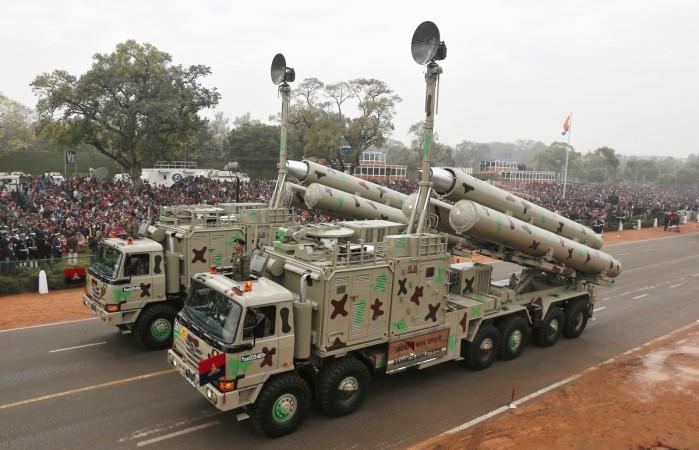
BrahMos, the short-range ramjet supersonic cruise missile, is one of the key highlights of years of Indo-Russian cooperation. It has been operational with India since 2012 and has been dreaded by rivals for its speed, stealth and accuracy.
Recently a Chinese newspaper and Chinese People's Liberation Army's (PLA) official mouthpiece, PLA Daily questioned the deployment of BrahMos missiles near the Indo-Chinese border in Arunachal Pradesh.
It noted that such deployment "exceeds the needs of its self-defence and poses serious threat to China's Tibet and Yunnan provinces." It also added that the deployment will increase competition and hostility in the relation between the two countries.
But Indian Army countered the Chinese by saying, "Our threat perceptions and security concerns are our own, and how we address these by deploying assets on our territory should be no one else's concern," NDTV reported quoting to Army sources.
But why is China, a communist country that spends around $145 billion (2015 forecast from CSIS) complaining about a missile placed well within India's territory?
BrahMos is inspired by Russian P-800 Oniks cruise missile, which uses ramjet engine and is developed to evade the defences of aircraft carriers.
BrahMos are faster than P-800 and fires up at Mach 2.8 and weights 3,000 kg. The height and weight composition of BrahMos, according to U.S. news portal, National Interest makes it devastating on impact.
Interception and detection of the missile is rather difficult given its ability to fly at supersonic speed and low altitude. More importantly, it is known to perform the "S-manoeuvre" before it hits the target, an evasive move that helps the missile escape any anti-air missiles.
Modern ships may have to use all the countermeasures to take down BrahMos, but if multiple missiles are fired, it becomes difficult for ships to counter them all, the report noted.
The missile has an operational range of 290 to 300kms. Moreover, since the range of the missile is lesser when compared with its Russian inspiration, the missiles need to be deployed much closer to the targets.
The report goes on to note a known fact that the range was kept within 300kms to confirm with Missile Technology Control Regime (MTCR), an elite club of 35 nations, which recently accepted India's membership.
Apart from the anti-ship missile, India has also developed several variants that include the land-based Vertical Launch Systems featuring eight-cells. Then there are the Mobile Autonomous Launcher systems with five launchers and 100 missiles.
BrahMos Block III variant is also being inducted into the Army. There is also the airborne variant, BrahMos-A, which is being tested to be launched from modified Su-30MKI fighter of the Indian Air Force.
India is also testing BrahMos-NG (NG stands for next-generation) a smaller, but faster and stealthier version of the bigger missile. Another deadly variant it is readying is the hypersonic version, BrahMos II. BrahMos II will be able to whiz past at Mach 7.
China's complaints against India could also be coming out following several reports that suggested the possibility of India selling these missiles to Vietnam. Vietnam has its own issues with China. Vietnam claims that China has illegally occupied coral reefs with conflicting claims in South China Sea.
Vietnam does not have a navy that can challenge the Chinese might in the region, but if India sells the missiles to Vietnam, it might pose huge threat to China. So selling them to Vietnam might be India's counter balancing act to China's role in arming Pakistan.















